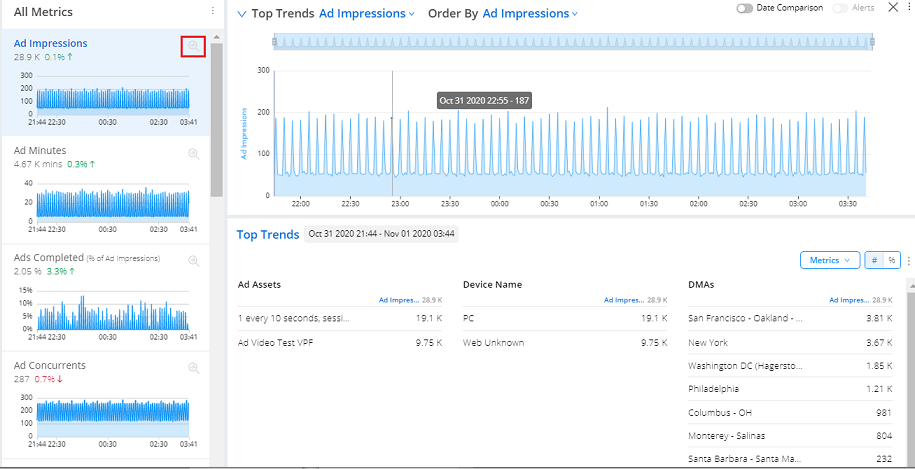After an ad alert link or Diagnostics button is clicked, the Diagnostics page appears with a time series and analysis window. To access the Diagnostics page for an ad break or ad alert:
- You can click a link to see the most recent event for each ad alert in your system. The Diagnostics page displays information and ad metrics about the most recent event (or the most recent five events) for the ad alert you selected.
- From an Events List page. This page is available from the Real-Time page when you expand an ad alert and click to view all events.
- From an ad Alert email notification. The Diagnostics page displays information and ad metrics for the event you received email about.
The Diagnostics page provides a number of controls that let you customize the display of information to best suit your diagnostic needs, such as a selectable time period, time sliders for detailed focus, and an Analysis window with analysis dimensions.

Displaying Event Data
When you come to the Diagnostics page from an ad alert event or an email, the page is already focused on the ad alert that brought you here. However, regardless of how you arrive at the Diagnostics page, there are a number of ways that you can customize the display to your needs. For example, you can add or remove filters, choose another metric to focus on, choose from the ad alerts that use your new metric, change the date range, change the analysis time scale, and more.
Here are some suggestions for displaying event data in the Diagnostics page:
First, choose an ad metric. This determines the ad alerts that are available and the data that appears in the diagnostics view. If there's only one ad alert for the ad metric you select, you see data in the Time Series and can use the gray sliders to adjust the timeline to see more data. If the Time Series contains events, you can click a specific event to see ad alert information.
- If you have multiple ad alerts, choose the one you want, adjust the timeline as needed, and select an event.
Use the Date Comparison and Alerts sliders to overlay a comparison time series and add alert indicators. You can click an alert indicator to display alert details.
Available Data
| Real-Time | Historical |
|---|---|
| No | Yes |